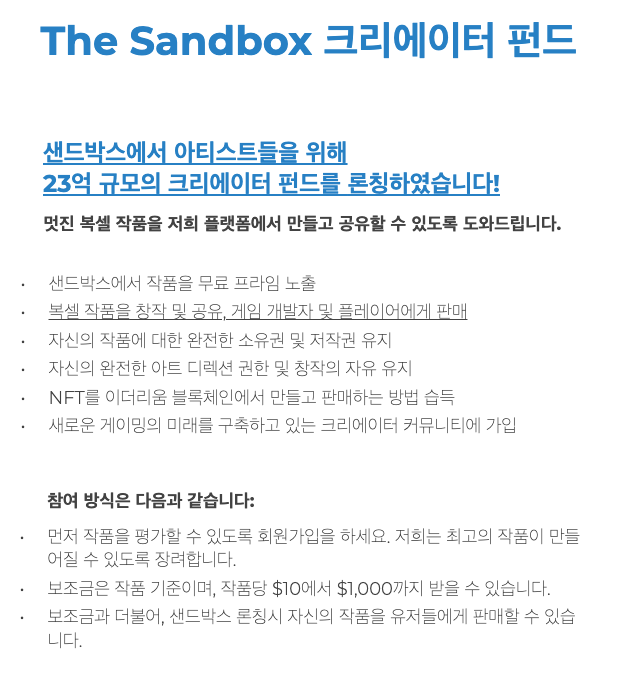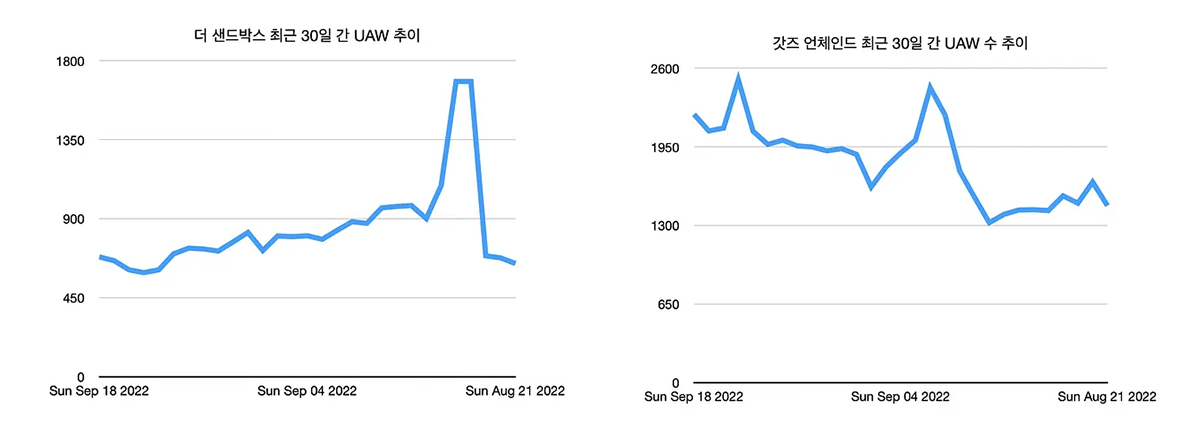
Do Dive into Web3 Game: Evaluation Framework for Web3 Games
Focused on Jon Radoff’s game play motivation model and Vroom’s expectancy theory

1. Success and failure of Web3 Game and the absence of a framework.
The massive success of Axie Infinity last year triggered the cryptocurrency market’s big interest in P2E (Play-to-Earn) system. Meanwhile, in Korea, Wemade’s Mir4 Global, a game that adopted WEMIX(token)-based P2E system, became highly successful, serving as a critical case for domestic game makers to enter the blockchain business. Against this backdrop, domestic game makers are continuing to think about how to realize Web 3 Game, including the P2E system.

- Nexon: The company has announced that it will build a blockchain game ecosystem centered around “Maple Story N,” an MMOPRG that has adopted NFT. It is expected to create a “Create-to-Earn” ecosystem like The Sandbox by providing MOD N and SDK.
- Netmarble: The company pioneered into Web 3 Gaming Market in collaboration with its blockchain game specialized subsidiary Marblex and CUBE (formerly ITAMCUBE) and announced “A3: Still Alive” and “Golden Bros”, which have integrated P2E systems.
- XLgames: XLgames have launched “Archeworld”, which integrated ArcheAge with NFT and Token System.

On the other hand, Domestic game makers that have entered the Web 3 Game business are struggling to develop a successful Web 3 game model, which, ironically, comes from the failure of P2E. P2E games, despite having enjoyed high level of interest and drastic increase in users, have exposed the risk of sustainability from drastic token price drops and huge user churn-out.
Since then, many people have provided critical opinions and proposals around the P2E system and Web3 Game, but it is hard to determine which element should be met to create a “great” Web3 Game. What kind of perspective is needed when we look at a game, and what design structure makes a good game?
To be more specific, what is the weakness of the P2E system to be addressed, and what should be the goal of game development? “Fun seeking instead of profit-seeking,” “Improving game quality,” etc., which are proposed as possible solutions, are somewhat reasonable. However, the criteria for determining which fun and quality to seek are ambiguous. In the following, I would like to interpret game elements and design from a motivational perspective and propose a framework for evaluating a Web3 Game.
2. An issue of “fun” in P2E

After the demise of P2E, one of the dominant criticisms was that P2E ignored a “fun” factor, which is a fundamental part of a game. P2E users play a game only to earn money, and when playing a game does not bring money, users sell all of their game assets and leave the game ecosystem without a fuss.
For instance, according to data provided by Aleksander Leonard Larsen, COO of SkyMavis, Axie Infinity, which led to the huge P2E fad, once recorded a whopping 2.7 million DAU (Daily Active Users). However, the number has plummeted to around250,000 as of August; This is because a large number of users left the system as the SLP (Smooth Love Potion) token rewards through game playing did not ensure consistent profits.

2.1. Are profit-seeking and fun-seeking two separate things?
Then, what is the “fun” element that Web3 Game and P2E games should pursue? Would earning profits and tokens through gameplay be an activity with no fun? I don’t think so. Gaining money through gameplay provides enough fun and motivation to a user to play a game. Therefore, such a game could secure an exponential number of users. However, this way to provide a “fun” element, which is to give game players token rewards, was not sustainable and, inevitably, had to end up being a “Ponzi” system that ensured profits for existing users at the expense of the new entrants.
The sustainability of P2E goes in line with the criticism that the P2E system is nothing more than what is the so-called “Eating rice.” “Eating rice” means “to sell game items to other users in exchange for cash, and buy and eat rice,” which mocks users that make cash transactions with game money or items. Profit-seeking through playing a game leads to the use of unauthorized programs, operation of multi-accounts at an abnormal level which deepens the inflation of game money, etc. and destroys the economic structure of the game and damages the gaming experience of other users, and in the worst case, threatens the existence of game itself.
Existing Web2 Games, which ban the selling and buying of game assets with cash as an act of violation of the agreement and operate a closed game ecosystem, cannot completely address the inflation issue of game money. As such, one can assume how fast the pace of inflation must have been for the Web3 P2E game, which had been run based on tokens that share the nature of game money and cashable assets.
3. Framework ①: Diversification of motivation
3.1. What is “fun”?
The above discussion has clarified what needs to be considered when designing a Web 3 Game. The ultimate goal of game design should be “To make users feel fun and motivated in a sustainable way.” But then, what is fun? Specifically, what kind of fun should be provided to users?
3.2. Game Play Motivation by Jon Radoff
Jon Radoff is an entrepreneur and a game designer in the U.S. He started his career as a founder of Eprise Corporation in 1997; he has been in the game industry since 2006 and now runs “Beamable,” a game creation platform based on Unity.
In his book “Game On: Energize your Business with Social Games”, published in 2011, he classified the gameplay motivation based on the compensation characteristics and the number of players, which are as follows. (“The impact on the game loyalty meditated by the motivation and satisfaction of playing an RPG mobile game: focused on the mobile game ‘Seven Knights’, Kim MinSoo, 2014” was referred for the explanation of each concept.)
- Immersion: A qualitative motivation that an individual game user has toward the gaming environment. It means a status of the highest level of positive emotion from proactively participating in the game and working out the task as the user has the ability and challenging spirit to address the task given. ex.) emotional assimilation or exploration of elements in a game (worldview, story, character, etc.).
- Cooperation: Motivation comes from the gameplay, where players mutually interact with each other in a non-competitive way. ex.) forming and leading a team, helping each other by sharing information or gifts.
- Achievement: Everything that makes a player feel that there has been some advancement during the gameplay comes from a quantitative compensation that the game user acquires under the gaming environment. ex.) equipment and level upgrade, item acquisition, etc.
- Competition: Motivation comes from all activities where multiple game users compete to win or get ahead toward the same purpose, resulting in quantitative compensation such as win/lose, ranking, etc.

The primary game-playing motivation of P2E game users was concentrated on“achievement,” where users earn tokens by playing a game. Of course, other motivations, including achievement, acquiring an NFT collectible, competition such as the PVP contest (Axie Infinity), and cooperation by forming a community (Stepn), were induced. However, the level is not noticeable compared with the achievement motivation throughP2E (or it can be interpreted that the motivation of achievement toward profit-seeking has removed other types of motivations). Also, after the token price drop, the achievement motivation was hard to maintain, which inevitably led to the massive user churn out.
Diversifying the motivations of game users can work as a major framework when creating or evaluating a game. However, this does not seem to be enough. How can the various types of user motivation be designed and triggered?
4. Framework②: Designing motivation structure
4.1. Vroom’s Expectancy theory
Victor Harold Vroom is well known for his famous book ‘Work and Motivation, Leadership and Decision Making’ and asserted “Expectancy theory,” which is about the motivation that drives an individual’s decision-making. Expectancy theory consists of the following factors.
Basic components
- Effort: an entirety of human or physical costs an individual invests in a specific work.
- Performance: A primary result derived from performing a work.
- Outcome: Secondary result or reward granted in proportion to the primary. result
Connecting factors
- Expectancy: Relation or proportionality between effort and performance.
- Instrumentality: Relation or proportionality between performance and outcome.
- Valence: Value of outcome (reward) an individual gives.
Calculating the motivational force
- Motivational force = Expectancy x Instrumentality x Valence

According to Vroom, an individual’s motivation for work comes from the close relationship between effort — performance — outcome. Motivation based on the expectancy theory is created through the following stages.
- Stage 1: Expectancy: Evaluating the performance resulted from an effort put by an individual.
- Stage 2: instrumentality: Evaluating the outcome(reward) given as a result of performance.
- Stage 3: Valence: Evaluating the value of the reward given.
- Stage 4: Result of value assessment, deciding whether to re-invest the effort.
Let’s take the example of Stepn to help you understand better.
4.2. Application of Expectancy theory — Stepn’s case
Effort
Quantitative: Costs to purchase sneakers NFT and to set up the ability.
Qualitative: Physical effort needed for GST farming (walking or running).
Performance
Quantitative: The amount of GST or Mystery box rewards that corresponds with the effort, the cumulative time and distance of walking or running.
Outcome
Quantitative: Yields that are earned from selling GST or Mystery box reward.
Qualitative: Sense of satisfaction after the workout, health improvement.

Process of motivation
- Stage 1 (Expectancy): Evaluating the GST reward one can get from walking or running after NFT setup and the workout record.
- Stage 2 (Instrumentality): Evaluating the profits that can be earned by selling GST or mystery box reward or a feeling about one’s health.
- Stage 3 (Valence): Evaluating the value that profits and health improvement, etc. give to an individual.
- Stage 4: Deciding whether to reinvest the effort after evaluating the value.
In the case of Stepn, the profit given as the “outcome” and the setup costs spent on the “effort” are based on the quantitative value of “money” in general, Stepn’s motivation is created based on the value of the outcome in comparison to the investment, a form of achievement motivation, that is ROI (Return on Investment). As mentioned earlier, these characteristics may lead to massive user churn when the quantitative outcome (reward) is not sufficiently given to the users. Qualitative rewards such as satisfaction after a workout and health improvement can also motivate the user to immerse. However, considering the massive churn after the token price drop, the quantitative rewards can be unnoticeable compared with the achievement motivation created through the token rewards.

5. Framework adoption: Exploring the structure of other types of motivation
Based on the above discussion, the following are characteristics considered issues of the P2E game.
- Effort, performance, and outcome depend on “Money,” quantitative value.
- Motivation structure concentrated on triggering achievement motivation (profit-seeking).
Suppose we assume that the sustainability issue of the Web 3 game takes place due to the above characteristics. What would be the options to design the motivation structure of theWeb 3 game breaking away from the P2E system? By applying the framework discussed before, let’s look at the examples of a model that can provide fun and motivation to the users in a sustainable manner.
5.1. Example of ‘Create-to-Earn’ model
C2E(Create-to-Earn) is a method where a game maker provides creators with a game development kit. Each creator unleashes creativity to make User Generated Content(UGC) and receives a reward depending on the performance of each content. Roblox is the case in point that has successfully adopted this model, and in Web 3, “The Sandbox” is striving for successful onboarding of the C2E model. If we consider the motivation structure that a creator has under C2E in accordance with the above framework, it will be as followings.

Assumption: Any game player can access the game development kit, and a game maker selects a UGC with high performance (no. of users, total played hours) and awards a reward.
Types of motivation: Immersion, achievement — Creating UGC requires understanding and exploring a game ecosystem. Each creator contributes to the ecosystem through their content or earns a token reward through the transaction.
Effort: Time and physical effort or creativity invested in content creation.
Performance: Asset within a game such as NFT, etc. created as a result of effort or the game itself.
Outcome: Satisfaction and development reward from the content performance, profit from the content transaction, satisfaction from content creation, and contribution to the game ecosystem.
Process of motivation
- Stage 1 (Expectancy): An evaluation of whether the efforts can be smoothly turned into the planned content.
- Stage 2 (Instrumentality): An evaluation of whether the content created can lead to a performance that is worth rewards, an evaluation of value towards content creation and contribution to the game ecosystem.
- Stage 3 (Valence): An evaluation of a value that quantitative rewards, profits, and satisfaction give to a creator.
- Stage 4: Deciding whether to re-invest the efforts after the value judgment.
Suppose it is assumed that the size of reward that a game maker gives to a content creator under the above C2E model is enough. In that case, the following can be considered regarding structure design where creators take the risk of no reward and join the content creation, specifically, regarding expectancy and instrumentality.
- Expectancy: Provision of game development kit that can realize what creators envision
- Instrumentality: Designing a reasonable reward plan for the content created

In case of The Sandbox, which is building a Web3 C2E ecosystem, it is making efforts to build a sustainable UGC ecosystem by creating “Game Maker Fund” and “Creator Fund” to recruit and selectively hire creators in the ecosystem. After hiring, it gives rewards based on the content guideline, which is why it can be viewed as a reasonable idea that strengthens instrumentality.
Meanwhile, in the existing gaming industry, the “Mode” game which is about modifying the current completed game to create a new game, can be taken as a reference for C2E (even though it lacks “Earn”). Looking at the cases of StarCraft and Warcraft, which used to be famously known as “Use-Map.” This type of “Mode” created “immersion motivation,” where creators got interested in game creation and engagement in the gaming world, which led to the creation of other various Mode game ecosystems.
6. Closing
In addition to The Sandbox, many projects that identify themselves as Web3 Games continue business by using tokens and NFT in their own unique ways. In the case of God’s Unchained, a TCG(Trading Card Game) genre like Hearthstone, it basically adopts the F2P(Free-to-Play) approach and triggers users’ competition motivation to induce them to use tokens and card NFTs.
However, even though projects have put a reasonable motivation structure in place, the Web3 Game users’ trend is insufficient. In fact, based on Dappradar, the number of the latest 30-day UAW(Unique Active Wallets) of The Sandbox and God’s Unchained remains only around thousands.

What needs to be done to Web3 Game to onboard more users? Looking at cases of major Web2 game makers, they seem to put enormous efforts into developing the worldview and characters to trigger the immersion motivation of game users. Because immersion motivation makes game playing itself an objective, it powers the users to consistently participate in the game ecosystem. Web3 Game projects would also need to find ways to successfully promote game users’ immersion motivation by developing a worldview and characters that users can relate to and feel attached to.
Also, adopting tokens and NFT is indispensable to Web3 Game projects. Unlike conventional game money, tokens and NFT have a property of cashable assets, which provides a directive incentive to game users in relation to gameplay, which is a powerful factor. A question such as “How to utilize token and NFT” or, more specifically, “Which part of a game should be tokenized” should be raised and discussed, and a project that answers this question is expected to lead the next blockchain industry trend.
After the success of CryptoKitties in 2017~18, discussions, or thoughts around Web3 or blockchain games continue. In your view, how should tokens and NFT be used in Web 3 games? I would like to close by citing the writing of Jaemin Park, who had the same concerned thought a few years ahead of me.
In my opinion, the thing that should be tokenized through blockchain in the context of a game is a player’s “effort,” which can directly affect the work quality of a game. An element of “effort” put into a rare item such as the “Execution Sword”(in Lineage) is a case in point. If there is a rare item like the Execution Sword in a game, no one would not doubt its value, and there won’t be anything strange or abnormal if the item is also traded as a status “asset” on a blockchain. — Jaemin Park, “Blockchain game: which part of the game should be tokenized.”
<References>
- Aleksander Leonard Larsen, Axie Growth Data
- 김민수, 모바일 RPG게임의 게임플레이 동기가 게임만족도에 매개하여 게임충성도에 미치는 영향, 2014
- 존 라도프(Jon Radoff), Game On: Energize your Business with Social Games
- Jaemin Park, 블록체인 게임: 게임의 무엇이 토큰화되어야 하는가